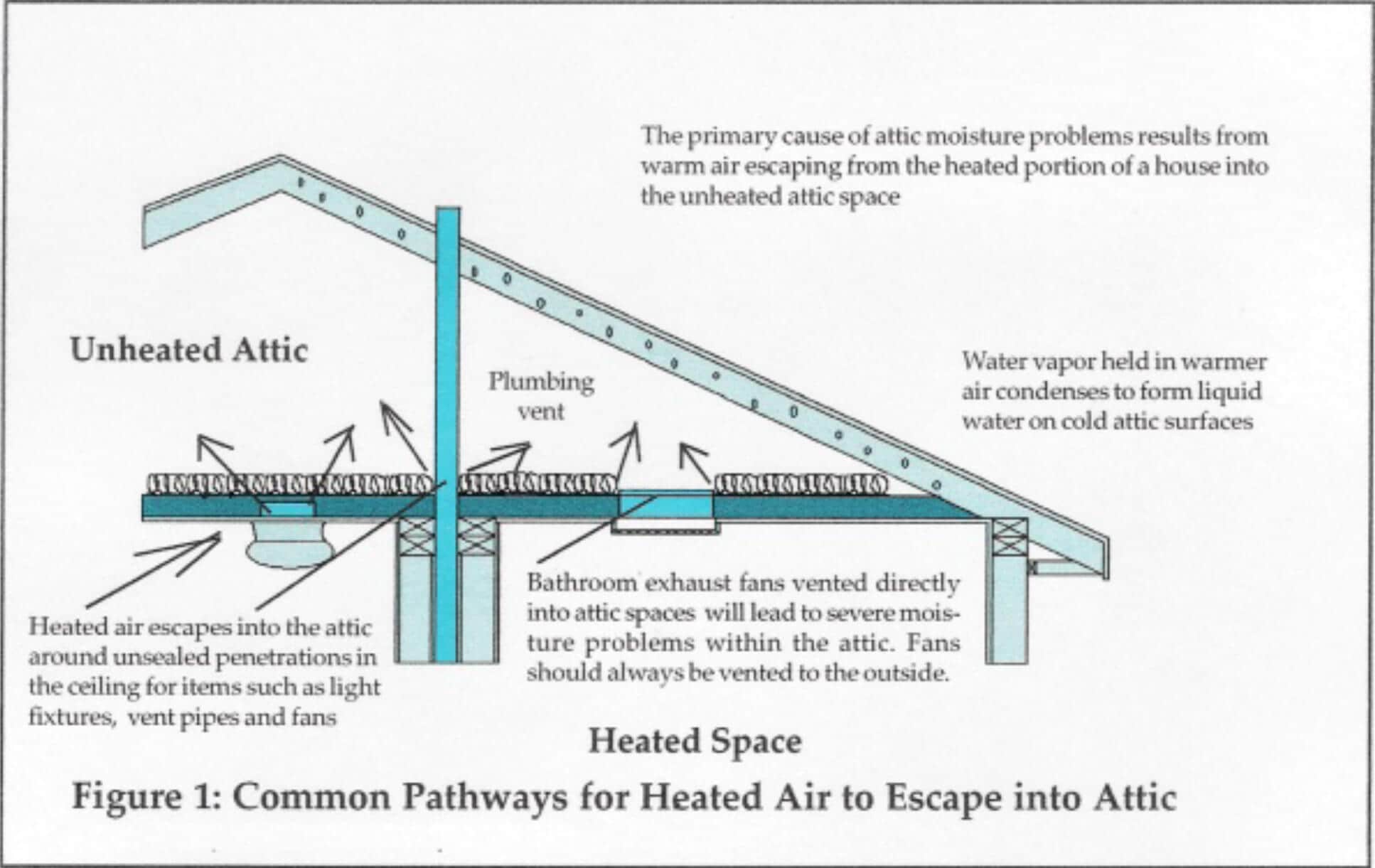ROOF LEAK?
DO I HAVE A ROOF LEAK OR ATTIC CONDENSATION?
Finding water damage on the wall or ceiling is worrying for any homeowner. Most people assume this is caused by a leaking roof, but that might not be the source. Water found in these places is commonly caused by condensation in the attic. Fixing this issue can be less costly than replacing a roof, but it should be addressed as soon as possible.
WHAT CAUSES WATER CONDENSATION?
During extremely cold weather, frost can accumulate in your attic. Heating your home produces warm air that rises, and if it seeps into the attic space, the frost will melt and appear as condensation.
SO, MY ROOF ISN’T LEAKING?
If you can’t identify any exterior damage to your roof or track down a leak, the source of your water damage is likely water condensation. Condensation can cause mold and poor air quality and can lead to ceiling collapse, so it should be inspected immediately. Hiring a professional to inspect the damage may be the best way to identify the safest approach for your home.
STEPS TO ADDRESS WATER CONDENSATION
In addition to heating your home, daily routines like cooking over the stove or taking a hot shower also create condensation. Cultivating some simple habits will help reduce the impact of these tasks. If taking the steps below doesn’t solve your condensation problems , they may be due to poor ventilation or insufficient insulation.
TASK ONE: OPEN ALL AIR VENTS
It’s a common misconception that you closing air vents in unused rooms is a good way to save money. In fact, however, decreasing air circulation can actually damage your HVAC system and compromise your ventilation, resulting in condensation. Open all vents, and make sure they are working properly to ensure this isn’t the source of the moisture issue.
TASK TWO: UTILIZE YOUR BATHROOM AND KITCHEN EXHAUST FANS
It seems like a small step, but exhaust fans are an essential part of reducing humid air that can leak into other areas of your home. Run the exhaust fans whenever you’re cooking or taking a bath or shower. In bathrooms, best practice is to run the fan for 30–60 minutes to return humidity levels back to normal.
TASK THREE: REDUCE THE USE OF YOUR HUMIDIFIER
Many people run humidifiers in their home during the winter if they feel the air is dry. While this is fine on occasion, overuse can create excess humidity, resulting in condensation. If you find find condensation on your windows, this could be an early indication that your humidifier is the source. Learn more from our previous post about using humidifiers in your home.
TASK FOUR: INSPECT YOUR ATTIC INSULATION
If you have taken the proper steps to remove excess humid air from your home, and you’re still having condensation issues, it might be time to check the attic insulation. Insulation is responsible for keeping warm air inside your living space and out of the attic, where it can lead to condensation. To save time and better pinpoint the problem, you can hire a professional to inspect your insulation and fill any gaps that might be letting warm air into the space.
Poor ventilation causes a lot of issues for homeowners. Your ventilation system should extract warm air from the attic and replace it with cool, dry air via a soffit. If the system is working properly, it will prevent moisture and mold. This not only will help to solve condensation issues but also improve air quality and make your home more energy efficient.

